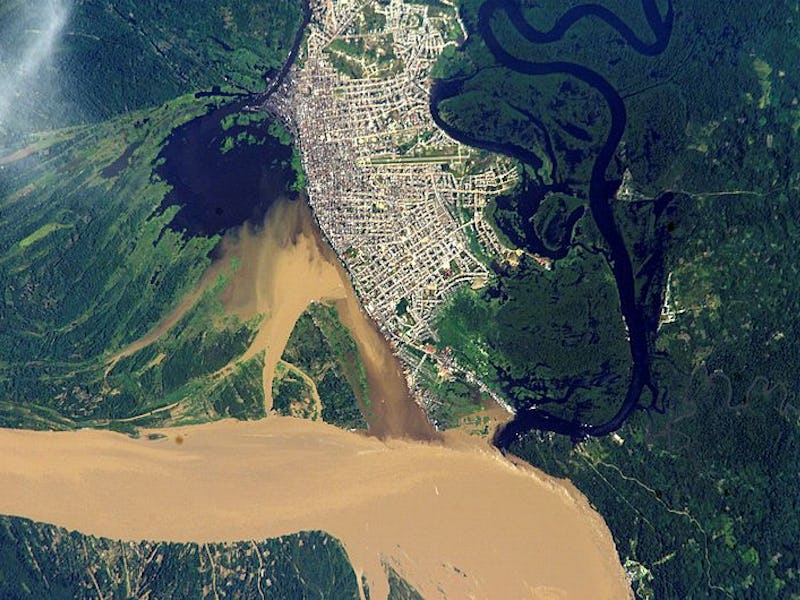A Deserted, Pristine Stretch of the Amazon Was Home to a Million Humans
Enter the "terre firme."

At twice the size of India, the Amazon is massive. But although it constitutes the world’s largest remaining tropical rainforest and hosts 10 percent of the world’s biodiversity and over 30 million humans, 95 percent of it remains unexplored. The terre firme is uncharted, and, according to a new paper, it hides many archaeological secrets.
For a long time, people believed that the Amazon was home to only a smattering of small villages, clustered around major rivers. That’s why it’s surprising that, in the new paper released Tuesday in Nature Communications, an international team of archeologists shows evidence of an enormous network of villages in a region once thought to be a human desert.
We’re giving away $3,000 of high-tech travel gear in this prize package. You could win a VR headset, Beats wireless headphones, and much more. Click here to enter!
“There is a common misconception that the Amazon is an untouched landscape, home to scattered, nomadic communities,” co-author and University of Exeter postdoctoral research fellow Jonas Gregorio de Souza, Ph.D., explained in a statement released Tuesday. “This is not the case. We have found that some populations away from the major rivers are much larger than previously thought, and these people had an impact on the environment which we can still find today.”
An aerial photo of one of the geoglyphs at the Jacó Sá site.
The archeological remains they discovered are all that’s left of a broad network of villages that once thrived in what is now the Brazilian state of Mato Grosso. Hundreds of villages, they discovered, existed in rainforest regions away from major rivers — fortified villages surrounded by mysterious earthwork designs called geoglyphs. Etched into the ground and resembling square, circular, or hexagonal shapes, these geoglyphs are not well understood, but the study authors hypothesize they could have been used in ceremonial rituals.
The findings indicate that it’s time to re-evaluate the history of the Amazon. Thousands of people likely lived in these villages, write the researchers, suggesting that humans played an important role in shaping Amazonian landscapes.
Compound structure with a small enclosure in the interior of a larger one.
When surveying Mato Grosso, the archeologists discovered 81 geoglyphs — a big find, but just a fraction of the 1,300 geoglyphs estimated to exist in this swath of Southern Amazonia. In the 1,118-mile stretch, they also encountered charcoal remains and excavated pottery, which they took as signs that villages existed in and around the area. Dating these artifacts showed that this area was continuously occupied between 1250 until 1500, by villagers connected through a network of causeways.
The researchers contend that these ancient communities had a huge impact on the environment around them, contradicting previous beliefs that this area of the Amazon was untouched by human farming or occupation. By piecing together the human history in this uncharted part of the world, the study authors hope to better understand how human structures can survive the passing of time in the Amazon. This doesn’t just illuminate the mysteries of the past; it also sheds light on how modern humans can, the archeologists write, make “informed policy decisions on sustainable futures.”
“The Amazon is crucial to regulating the Earth’s climate,” says de Souza, “and knowing more about its history will help everyone make informed decisions about how it should be cared for in the future.”